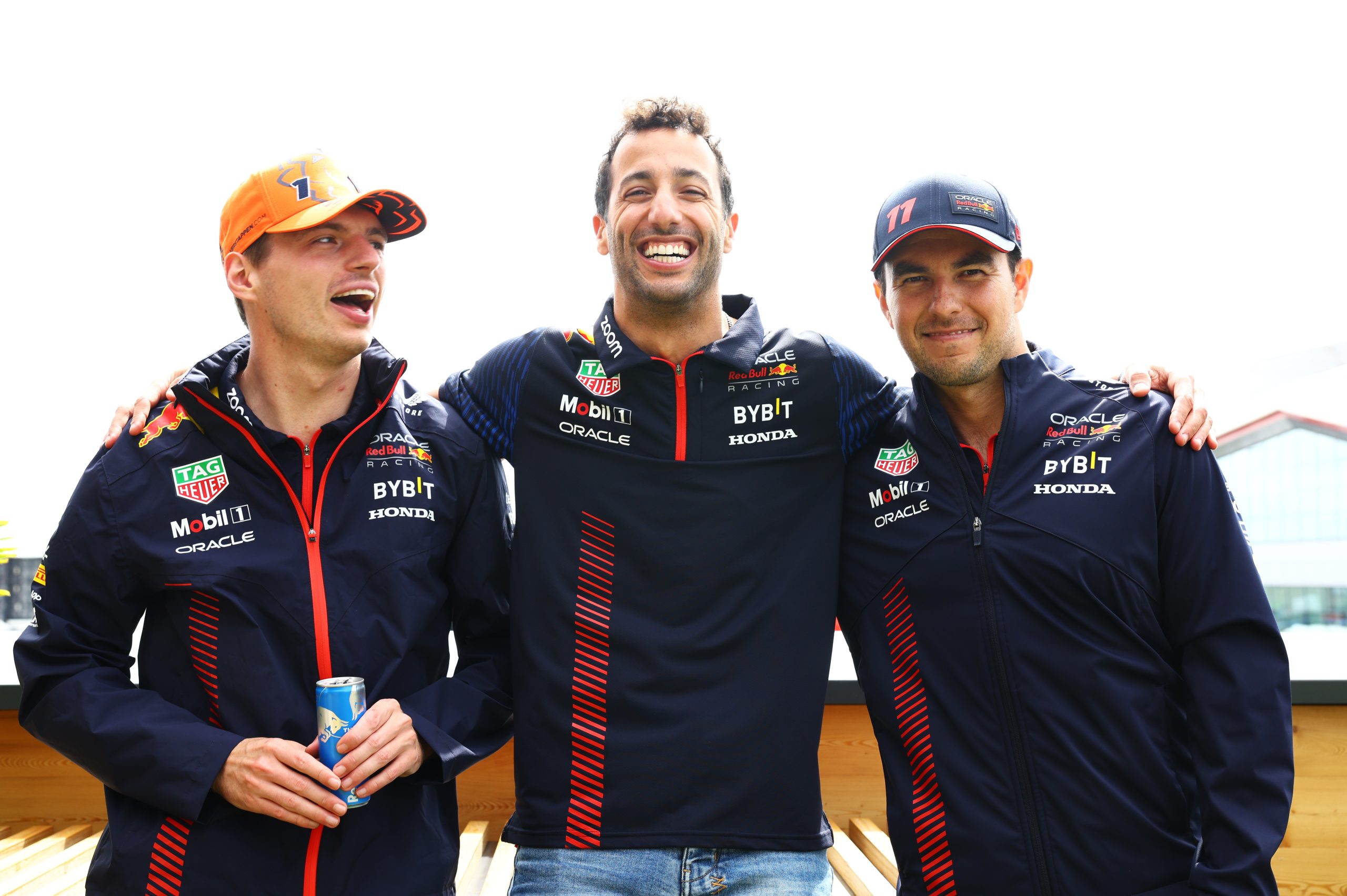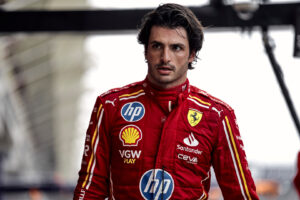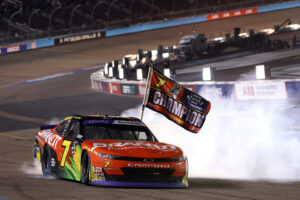Red Bull replacing Nyck De Vries with Daniel Ricciardo at Alpha Tauri was not the first time Red Bull drivers got replaced mid-season. Throughout the years, many drivers suffered a similar fate at the hands of Red Bull.
Being a Red Bull driver is cutthroat. Nothing short of perfection is expected. And when the team can’t get it from one of their drivers, Helmut Marko is ruthless. Especially with Alpha Tauri as their sister team, Marko has plenty of options to replace or sack drivers. The Milton Keynes-based team has quite the history of dropping and swapping drivers in a brutal way. Let’s take a look at some of them.
2005 – Vitantonio Liuzzi and Christian Klien play musical chairs at Red Bull
This was Red Bull’s first season in Formula One after the team purchased and rebranded Jaguar to Red Bull Racing. Trying to start out strong, Red Bull chose a strange strategy. Three drivers in their line-up. David Coulthard lead the team, with the second driver role being split between Vitantonio Liuzzi and Christian Klien.
The Italian Liuzzi was a Red Bull driver who had delivered key performances in Formula 3000 earning an F1 shot. Klien drove for Jaguar the year prior, and was kept on board.
Both drivers switched seats throughout the 2005 season. The pair were signed to each race in four-race blocks, but it was Klien who ended up having the most seat time. The team quickly realized the strange arrangement was beneficial to no one. It took until 2006 for Liuzzi to get his true shot in F1. When he joined Toro Rosso after doing his initial four-race scheduled block at Red Bull in 2005.
2007 – Scott Speed out for rookie Sebastian Vettel at Toro Rosso
The Red Bull junior team Toro Rosso were halfway into their second year in F1 when the relationship between full-time driver Scott Speed and team boss Franz Tost broke down. Allegedly, there was a physical altercation between the two. Up till this day, the truths of the matter are still unknown.
The choice was made to promote Red Bull junior driver Sebastian Vettel to a full-time race seat for the second half of the year. Vettel had shown some promising signs, and there was confidence that he would be a great addition to the team. Can’t say they were wrong on that one.
2016 – Daniil Kvyat out for teenage Max Verstappen at Red Bull
Four races into the 2016 season, Daniil Kvyat was replaced by Toro Rosso driver Max Verstappen and the rest is history. The Dutchman got the promotion after just one full season in F1 at the age of 18. Red Bull was immediately proven right when Max won the 2016 Spanish Grand Prix and became the youngest-ever race winner in F1.
While Kvyat’s performance certainly wasn’t spectacular, other motives were also at play. In 2022, Helmut Marko revealed that the relationship between Verstappen and then Toro Rosso teammate Carlos Sainz was troubled.
2017 – Daniil Kvyat out, then in again with Pierre Gasly and Brendon Hartley both in for Toro Rosso
Towards the end of the 2017 season, Red Bull were very chaotic with how they handled their driver situation. The team rotated drivers in a wild manner.
Daniil Kvyat was struggling at Toro Rosso. He got replaced by highly rated junior, reigning GP2 Champion, Pierre Gasly. Carlos Sainz then left to join Renault, following Jolyon Palmer’s F1 exit. This left a seat open, and Kvyat was brought back in as a substitute. Making things even more complicated. Gasly was forced to miss the 2017 United States Grand Prix due to a scheduling clash with the final round of his Super Formula campaign in Japan.
Ultimately, the team turned to WEC driver and former Red Bull junior Brendon Hartley as a replacement for Gasly at the US Grand Prix. Kvyat was dropped entirely from Toro Rosso after the United States GP. Gasly and Hartley were Toro Rosso’s driver pairing for the rest of the season.
2019 – Pierre Gasly and Alex Albon shuffle between Toro Rosso and Red Bull
With Daniel Ricciardo leaving for Renault, the Austrian team made the decision to promote Pierre Gasly to be the teammate with newfound team leader, Max Verstappen. Over at Toro Rosso Kvyat made one final return to F1 and Alex Albon replaced Brendon Hartley
It was a great promotion for Gasly, and it looked like a promising move, until it wasn’t. Gasly failed to match the pace of Max. As we have seen from the seasons before, for Red Bull, it just wasn’t good enough. Max won two races in the first half of the year, whilst the Frenchman’s best result was fourth place.
In true Red Bull fashion, the pressure mounted, and the team announced they would be demoting Pierre Gasly back to Toro Rosso. Upgrading Alex Albon from Toro Rosso to Red Bull. Albon was another driver that looked promising, as he had delivered some good performances for Toro Rosso. But this is Red Bull, would this one stick?
The answer was no. Albon was unlucky, but also struggled during his full 2020 season. The Thai was demoted for 2021, leaving him without a drive for the next season. Red Bull then brought in the veteran Sergio Perez for their current driver line up.
2023 – Newly promoted Nyck de Vries out for recently unemployed Daniel Ricciardo at Alpha Tauri
10 races into his first full F1 season, Red Bull have already given up on Nyck de Vries. The Dutch driver had been performing poorly compared to his Alpha Tauri teammate, Yuki Tsunoda.
De Vries got the opportunity to race in F1 when Alex Albon couldn’t attend 2022’s Italian Grand Prix as he was recovering from a surgery on his appendix. That weekend, de Vries gave an exceptional performance, dragging the Williams into the points. His performance sparked a lot of conversation, and teams were vetting him for the 2023 season. To his luck, or maybe not, Red Bull signed him and placed him in the Alpha Tauri team for the 2023 season.
It is safe to say that the former FIA Formula E World Champion has not lived up to the expectations set for him by his performance in Italy last year. So much so, that not even halfway into the 2023 season, Red Bull and Alpha Tauri have agreed to have Daniel Ricciardo replace Nyck De Vries with immediate effect. While it is sad to see de Vries go after such little time, it comes as no surprise when you take a look back at the history of Red Bull’s handling of their drivers since their entry into F1 in 2005.
Once again, a Red Bull driver is replaced by an ex-Red Bull driver. Will this be the last we see of this loop?






